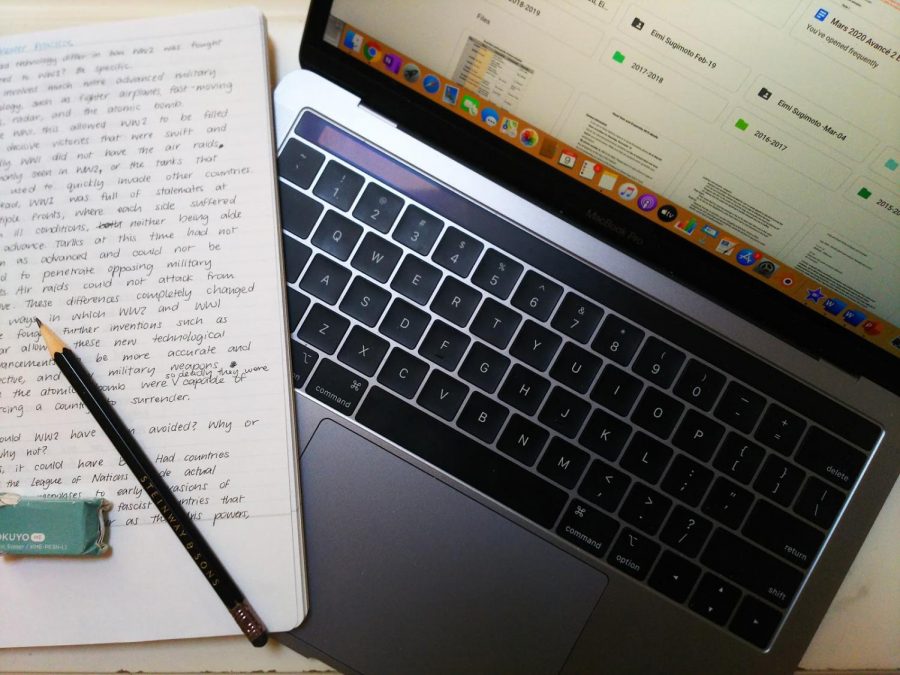E-learning: e for efficient?
Google Meet classes, hundreds of open tabs, uploading all of our classwork and homework assignments… e-learning can feel fast-paced yet sluggish as we access our classrooms with the click of a button, tired eyes squinting at the screen.
When it comes to e-learning, a major concern is: are we achieving the same amount as we would be at school? Is our time being spent better on our classwork when we’re at home?

Of course, learning from home means a lot of extra time. For students who live far from our campus this could mean an extra hour in bed or an extra hour spent on schoolwork. There’s also the time freed up from lack of extracurriculars or clubs and council meetings, not to mention the few extra minutes saved not having to move from classroom to classroom, packing and unpacking our things. Small parts of our school schedule add up to large chunks of time we can spend on other activities at home.
With e-learning, our classroom is just steps away, at our computers. At the click of a button we can enter our next class on a video call, or find instructions to our classwork posted on Moodle.
Seems more efficient, doesn’t it?
Those chunks of time, if spent productively, can lead to an incredibly efficient learning system. With less time being spent on things besides schoolwork, e-learning should be setting us up to be able to utilize our time more wisely. More efficiently.
What should be considered, though, are the small demerits of e-learning. Computer glitches or audio and camera problems, confusion surrounding new online classroom platforms, connection problems, countless documents, Moodle submissions, and more to stay on top of.
Yet, arguably, with all of this in mind, e-learning is still allowing us to finish more assignments in less time, for homework and classwork.
This may also be due to something that e-learning has severely restricted – class discussion. With Google Meet, class discussion is more difficult as we sit feeling isolated at our computers, meaning lecture-based classes are common. Some classes are just pure schoolwork, assignments and activities to be done and filled out individually. And while discussion may not be essential to the amount of material you cover in one class, it can allow some of us to be more engaged in our work, as well as gain a better understanding of it. The impact this has on student learning also depends on the subject, with, for example, science subjects requiring more hands-on learning with experiments while mathematics does not. So really, it comes down to the class and how you learn best.
There are still benefits to individual work and learning though, that make e-learning a “hit”. Classes in which you can achieve most of the tasks with ease can end a few minutes early, allowing students to take much needed breaks from the screen, improving focus throughout the day. And with the responsibility of how you manage and use your time, challenging classes can feel a little less rushed as you can organize what skills you want to focus on and take time to hone.
It is difficult to measure efficiency when it comes to school, as the amount of completed classwork is not always a reliable indicator of how much the student has learned. Yet it is clear that without going to school and with everything at our fingertips, we each have some more time that can now be used to achieve more than we did physically going to school. How we use this time, as well as how each of us learns new material, however, can make all the difference.
